Best NASes: Q1 2016
by Ganesh T S on March 30, 2016 5:00 PM EST- Posted in
- NAS
- Storage
- Guides
- Western Digital
- NetGear
- QNAP
- ZyXEL
- Gift Guide
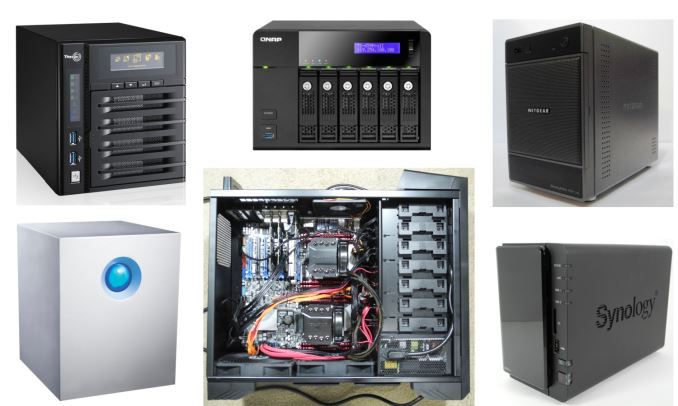
Network-attached storage vendors do not usually follow a regular yearly cadence in updating their offerings. Releases for different market segments are spread throughout the year. That said, thanks to the Consumer Electronics Show (CES) held in January, the first quarter of the calendar year provides glimpses into what vendors have in store for the foreseeable future. Some of the announced products are either available for shipment right away or get into the market later in the quarter. Today, we will take a look at the various options currently available in the commercial off-the-shelf (COTS) network-attached storage (NAS) market space.
The COTS NAS market can't be simply delineated based on price and performance. As a rule of thumb, one can say that the price of a NAS increases with the number of bays in it. However, even within the same number of bays, we get NAS units spanning a wide price range. Any consumer in the market for a NAS needs to consider the following aspects before deciding upon the budget:
- Amount of storage needed (number of bays)
- Intended use-case
- Business-oriented or home / multimedia-focused
- Expected number of simultaneous clients
- Downtime tolerance
- Required processing power (both file-serving and apps)
- Value of invested time (in the case where there is a toss-up between the COTS and DIY routes)
- Mobile and native NAS applications ecosystem
We have evaluated a large number of NAS units (with different bay-counts) over the last several years. The lineups mentioned below (in alphabetical order) are the ones that we are comfortable recommending for purchase after putting a few of their members through long-term testing. Compared to previous years, we have removed the LenovoEMC i- and p- series, as well as the Seagate NAS and NAS Pro units, as they no longer seem to be available for purchase and no new products have been announced in the last year (even though their support forums are still active with official replies).
- Asustor Storage Units
- Buffalo LinkStation and TeraStation Series
- Netgear ReadyNAS Series
- QNAP Turbo NAS Units
- Synology DiskStation and RackStation Series
- Western Digital Consumer Series
- ZyXEL Network Storage Units
In this guide, we present suitable options for 2-,4- and 8-bay NAS units targeting the home consumer / SOHO market. One important aspect here is that we are not going to talk about the high-end SMB market or the multitude of offerings that come with Windows Storage Server or some similar flavor. Only products based on custom OSes are being considered in this guide.
Option 1 (2-bay): Western Digital My Cloud EX 2 Ultra [ Diskless: $160, 2x2TB: $350 ]
Most units sold in the 2-bay market are purchased by the average consumer who wants to back up photos and videos taken with mobile devices. A performance powerhouse is rarely needed in this market segment. While the user experience with the mobile app(s) is vital, the presence of apps on the NAS itself is just an icing on the cake.
Western Digital revamped their 2-bay product line last month with the My Cloud EX2 Ultra. Compared to the previously recommended My Cloud Mirror Gen 2, this is a slightly more powerful offering with double the RAM (1GB DDR3). Models start at $160 for the diskless version and go up to $900 when bundled with two WD Red 8TB helium drives.
Western Digital has also been enhancing various core features such as backup and sync capabilities in the My Cloud OS. Integrated Docker capabilities in the My Cloud OS point to the possibility of multiple easily-integrated third-party apps in the future. Western Digital is obviously a big vendor with end-user support appropriate even for non-tech savvy folks. Coupled with the plug-and-play experience, this makes it an ideal purchase for anyone who is looking to get started with network attached storage and needs basic data protection.
Option 2 (2-bay): Synology DS216+ [ Diskless: $300 ]
Power users wanting to experiment with btrfs and needing a more full-featured COTS NAS OS need to look no further than Synology's DSM 6.0. btrfs is available only on x86-based NAS models. The most economical Synology NAS for users wanting to evaluate btrfs for their needs is the Synology DS216+, based on the Intel Braswell platform.
The DS216+ is not going to break any benchmark records, as it is held back by the single GbE LAN port. However, the capabilities of DSM 6.0 and the powerful x86 platform, as well as the pricing make the Synology DS216+ an interesting product to consider.
Option 3 (4-bay): ZyXEL NAS540 [ Diskless: $220 ]
The ZyXEL NAS540 came in for review last year, and is still under evaluation. But, we like the unit enough to be able to recommend it as an alternative to the popular LenovoEMC ix4-300d (now that LenovoEMC is no longer selling that model). The main attraction here is the price - $220 for four bays is approximately the same as what the ix4-300d used to cost when it was in the market. However, the NAS540 has double the RAM (1GB DDR3) of the ix4-300d. It also supports hot-swapping of the drives, unlike the ix4-300d.
The NAS540 is a PowerPC-based unit (Freescale/NXP FS1024 (M86203G12) C2K dual-core @ 1.2 GHz). It comes with dual GbE LAN ports, a USB 3.0 port as well as a SD card slot. ZyXEL has equipped the NAS with enough features (mobile apps, remote access etc.) to make it deliver very good value for money. Obviously, one shouldn't expect the finesse and capabilities of OSes from the likes of Synology and QNAP, but, again, the price more than makes up for the missing features and sporadic firmware updates.
A couple of days back, Synology announced the Marvell ARMADA 385-based DS416slim (with support exclusively for 2.5" drives). While it is definitely an interesting product (particularly for power users requiring a small, power-efficient storage box for home-based virtualization labs), the average storage-hungry consumer is better off with a traditional 4-bay unit.
Option 4 (4-bay): QNAP TS-453A [ Diskless / 4GB RAM: $599 ]
The first quarter of the year hasn't seen too many updates on the 4-bay front (particularly talking about x86-based models). QNAP did launch their Braswell-based units at CES. In our previous guide, we had recommended the QNAP TS-453 Pro. The Braswell version is a worthy update that we will continue to recommend for the same reasons. The TS-453A comes with four GbE LAN ports - ideal for dedicating to virtual machines running on the NAS.
We wouldn't suggest running intensive VMs on the Intel Celeron N3150-based TS-453 Pro, but the platform is powerful enough to run Ubuntu VMs and the like for, say, acting as a home automation controller. QNAP's QTS is very rich in features (both mobile apps and the NAS apps ecosystem), and is perfect for power users.
Option 5 (8-bay): QNAP TVS-871-i7-16G [ Diskless / 16GB RAM: $2199 ]
Our 8-bay recommendation is retained from our previous guide. The TVS-871-i7-16G is a no-holds barred NAS sporting a Core i7-4790S Haswell processor. With 16 GB of RAM and a minimum of 4x 1GbE ports (additional 2x 10G also possible with the spare PCIe expansion slot), this NAS is ideal for running multiple intensive VMs. The 4C/8T Core i7 CPU ensures that there is enough processing power for the VMs and plenty to spare for the NAS functionality as well as apps running on the NAS itself.
The TVS-x71 units are meant for the high-end SMB market, but, in our evaluation of a TVS-871T-i7-16G unit over the last several months (review is coming out soon), we can say that it is positively drool-worthy for the high-end power users with cash to burn. The Pentium-based model comes in at $1350, while the Core i3-based one is at $1377.
For a more moderately priced 8-bay system on the COTS side, one could opt for models such as the Synology DS1815+ [ $961 , Review ] or the QNAP TS-853A [ $999 ]. Obviously, going the DIY route with, say, an ASRock Rack C2750D4I board and a U-NAS NSC-800 chassis [ Review ] might make for an interesting build, but the price difference is not that big (approx. $845 vs. approx. $1000) when build time and software management aspects are considered.
Honorable Mentions:
Option 6 (4-bay): Netgear ReadyNAS RN214 [ Diskless: $500 ]
On the 4-bay side, Netgear's ReadyNAS RN214 with an updated quad-core Annapurna Labs SoC and btrfs support is an interesting option. Coupled with the newly introduced Netgear Nighthawk X8 R8500 tri-band 4x4 802.11ac router and the promise of plug-and-play link aggregation support, it presents a compelling solution for consumers in the market for a router as well as a NAS.


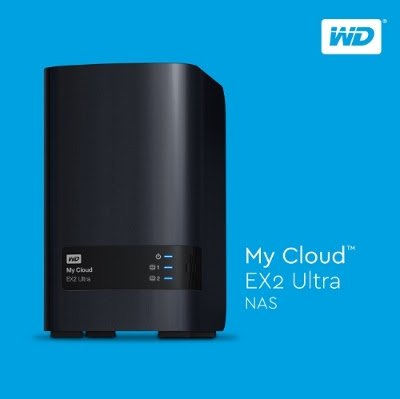
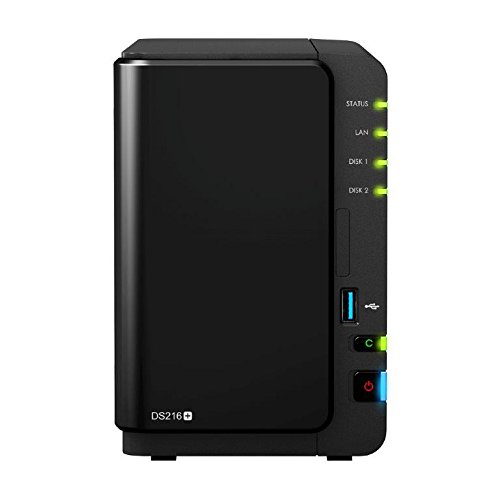
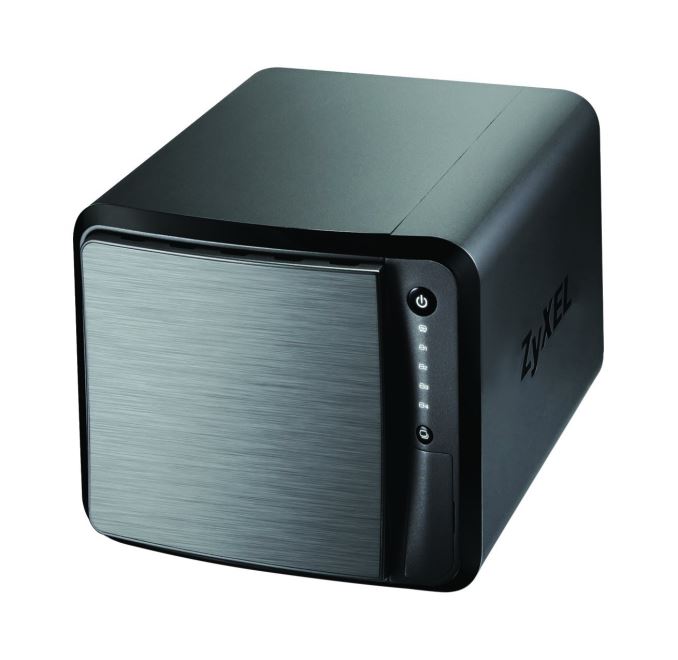
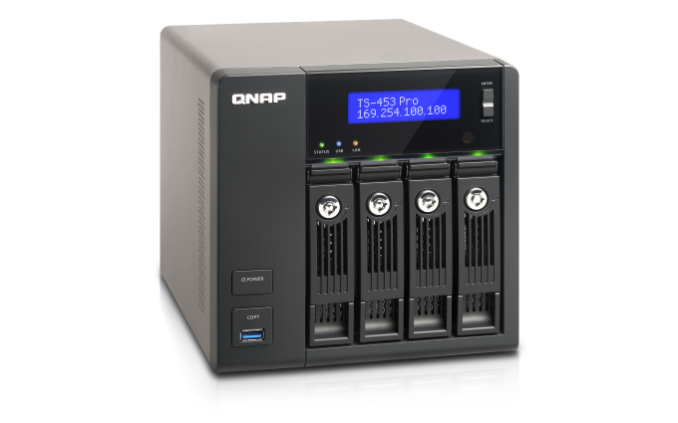

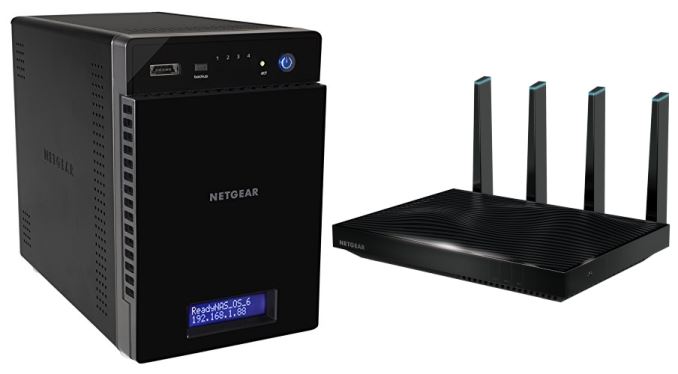








26 Comments
View All Comments
benzosaurus - Thursday, March 31, 2016 - link
If you're building your own system and aren't paying the power bill or care about space, it's worth noting that you can pick 1 or 2U Westmere servers with 4-8 bays for 50-100$ now.Lazn_W - Thursday, March 31, 2016 - link
I was planning on getting one of the QNAP options till the Dell PowerEdge T20 went on sale fore $150, combine that with Xpenology and you get a great cheap NAS with loads of features, just no hotswap.LuxZg - Sunday, April 3, 2016 - link
When a PC with an i3, 16GB RAM, 4 Gbe NICs, space for 5-6 drives and rest of the case/PSU/... is possible to get for <250$, is there really any sense to spend 2x more for a 4-bay/Celeron TS-453 Pro, or 50% more for 2-bay non-x86 Synology DS216+? With FreeNAS and OwnCloud being able to work just fine on such PC <250$ PC, and you getting way more performance for NAS for less money... Only option that really makes sense is My Cloud EX 2 Ultra for someone that's really not a technical person, and will just plug it in and use it as a beefed up / more convenient external hard drive. We do have 2 lower-end 214/216 Synolog NAS devices in office, but those being deployed for "political reasons" (read: non-IT management thought they were nice), not cost effectivness or performance. And while one is being used by 1 person and gets a "nice gadget" comments from same user, second one could as well be a shared folder on any PC (used by 2 people that share a common folder... despite the fact we have a dedicated File Server). Neither of these were really needed. And neither gets praise for speed (actually, they are "a bit slow at times", even though only 1 / 2 people use them). I can't imagine such device being used by 10 people, for that you just have to get a more powerful NAS, which again - costs more than a similar PC. Ease of use is all and nice, but after a first setup which was NOT 10 minutes (when you first setup one, you do want to get to know it), ease of use comes down to "it's working, don't touch". So why not spend 1 hour moe to setup FreeNAS + OwnCloud + any plugins you need, and you'll at least have better performance. Oh, and yes, these "save space"... but both are placed in server racks in another room. So... really, just wasting good 4U-5U space on a rack-mount shelf (another 1U) where you could have had another server (or 6). I'm not saying they don't make ANY sense at all, they do, for 1-2 person SOHO or home use, by non-tech user, that has no space but keeps NAS on his desk or next to TV, and so on. But ... WD My Cloud EX 2 Ultra is enough for those people, it really is, in 98% of cases. And this is only recommendation from this article that actually makes sense. A beefed up / more convenient external hard drive, it's all that most people need. Either that, or they really need a lot more, and a dedicated "server" PC is next logical step.jlabelle - Monday, April 18, 2016 - link
I cannot comment on the technical advantages (or disadvantages) of a NAS versus a custom built PC. But from a consumer point of view, there is major advantages. My father has a server from a Windows Server OS. Because of that, a lot of things cannot be done or not easily compared to a NAS.For instance :
* mobile application : this is a MAJOR bonus. I can check my photos from any mobile phone, my video (and no, Plex or others is much more limited and does not wrok as well as DS Video for instance), check my camera live feeds, manage my download.... Having those capabilities are very difficult or impossible from a PC server
* backup and synchronization : it is a breeze to have Cloud backup or synchronization, incremental with TimeMachine style backup wherease, again, it is complicated or impossible to replicate all the same capabilities on a PC server
So while it can be marginally cheaper, a NAS enclosure can be kept many years and for most people, a NAS is a much better, quicker, easier to setup, more complete option as trying to built that himself.
edward1987 - Tuesday, April 12, 2016 - link
From enterprise point of view - yes QNAP TVS-871-i7-16G is probably most powerful box if no thunderbolt needed. http://www.span.com/compare/TVS-871T-i7-16G-vs-TVS...About two bays - nothing is really better than DS716+.
ToiT - Thursday, May 26, 2016 - link
I would love to see more information on performance when encryption is enabled (ie: AES-NI). There seems to be a huge lack of this around the interwebs :[